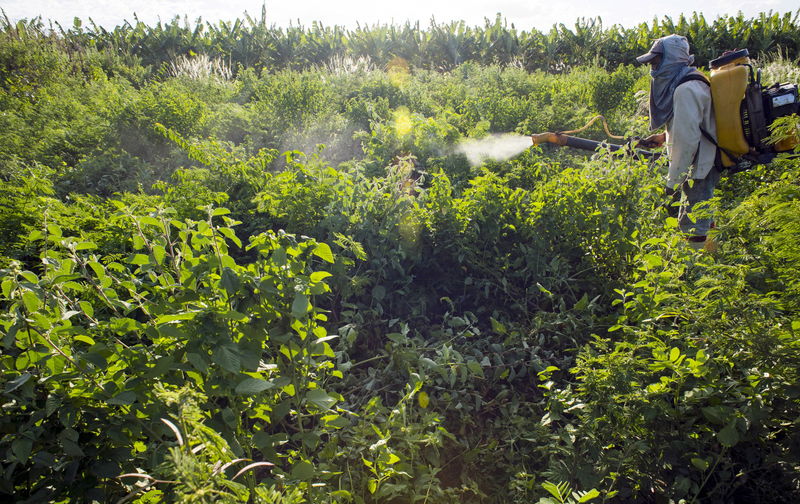By Matthew Stock
A new spray technology that shoots a targeted droplet with incredible accuracy could cut agricultural use of chemicals by more than 99 percent, according to the developers. The technology has the potential to not only save farmers money, but also help protect the environment by dramatically reducing the amount of chemicals that are applied.
The system uses advanced machine vision algorithms that can differentiate between healthy and diseased crops, and then apply a droplet only to the crops that need it.
"This targeted dispense technology has the potential to dramatically reduce the amount of pesticides and herbicides that we apply to crops today; potentially by up to 99 percent. It does this by selectively targeting only weeds and infestations in a whole field, so that healthy crop and soil doesn't have pesticide applied to it. Through that we can massively reduce both cost and environmental impact," said Niall Mottram, head of agrifood product development at developers Cambridge Consultants.
Mottram says eventually a larger version of the device could be mounted onto the side of a farm vehicle, with multiple nozzles shooting targeted droplets as it drives through a field of crops.
To demonstrate its potential, a single nozzle system is mounted over a conveyor belt. Cards with pictures of green 'healthy' leaves on one side and 'diseased' orange leaves on the other side are dropped at random onto the conveyor belt, with the laser-guided nozzle adjusting to shoot a droplet onto the orange leaves, while ignoring the green leaves.
The system uses mostly readily-available hardware, including a Playstation camera and dispensing technology from ink-jet printers, but Mottram says it's their programming that gives it the precision to hit an object while moving.
"Being able to hit a moving target is challenging. And hitting a moving target that varies in appearance is even more so. So being able to differentiate from color and shape, and then being able to calculate how quickly you're moving and therefore at what point you should dispense so that you hit your target; that requires some pretty sophisticated algorithms," Mottram told Reuters.
The camera looks ahead at the crop and uses shape, size and color to identify targets. These are tracked as the vehicle approaches, with the data then relayed to the dispensing system which aims the nozzle. The droplet travels at five meters per second, and takes one tenth of a second to hit the target. Cambridge Consultants say the system can successfully hit small targets from a height of 50cm (20 inches), even when the farm vehicle is moving at speeds of more than 25mph (40kph).
Targeting specific leaves or pests means the amount of chemicals dispensed is vastly reduced, with drift and run-off into the environment practically eliminated, said Mottram. It could prove particularly efficacious with high-value crops, he added.
"This technology won't be suitable for all crops; indeed in a field where there's a very high density of pests it's probably more appropriate to use existing spray nozzle technology. But where you have a high-value crop, let's say something like strawberries, and you need to very selectively pick off the weeds or the infestation, this technology is very applicable because you're able to very carefully move through the field and pick off those targets that you specifically want to hit."
The current popular class of pesticides known as neonicotinoids, or neonics, are sold by agrichemical companies to boost yields of staple crops but are also deployed widely on annual and perennial plants used in lawns and gardens. Over the last few years evidence has mounted that links the use of neonics to widespread die-offs of honey bees needed to pollinate crops. There are also fears the insecticides are harming other pollinators.
Incoming changes to laws governing the use of these chemicals means farmers may soon have to switch to using natural insecticides; known as 'biologicals'. While these are far more costly, Mottram says their targeted spray system could be the answer.
"This technology enables the next generation of 'agri-chemicals' to be used. So a lot of existing chemicals are perhaps coming to the point where they're going to be banned. The next generation, they're typically called 'biologicals', they're very much more expensive than the chemicals used today. This technology, however, might be an enabler for them. So you have something that's a little bit more targeted and a little bit more environmentally friendly that can do the same jobs as a lot of the more harmful chemicals do today," Mottram said. OLUSSCIENCE Reuters US Online Report Science News 20160201T143325+0000
